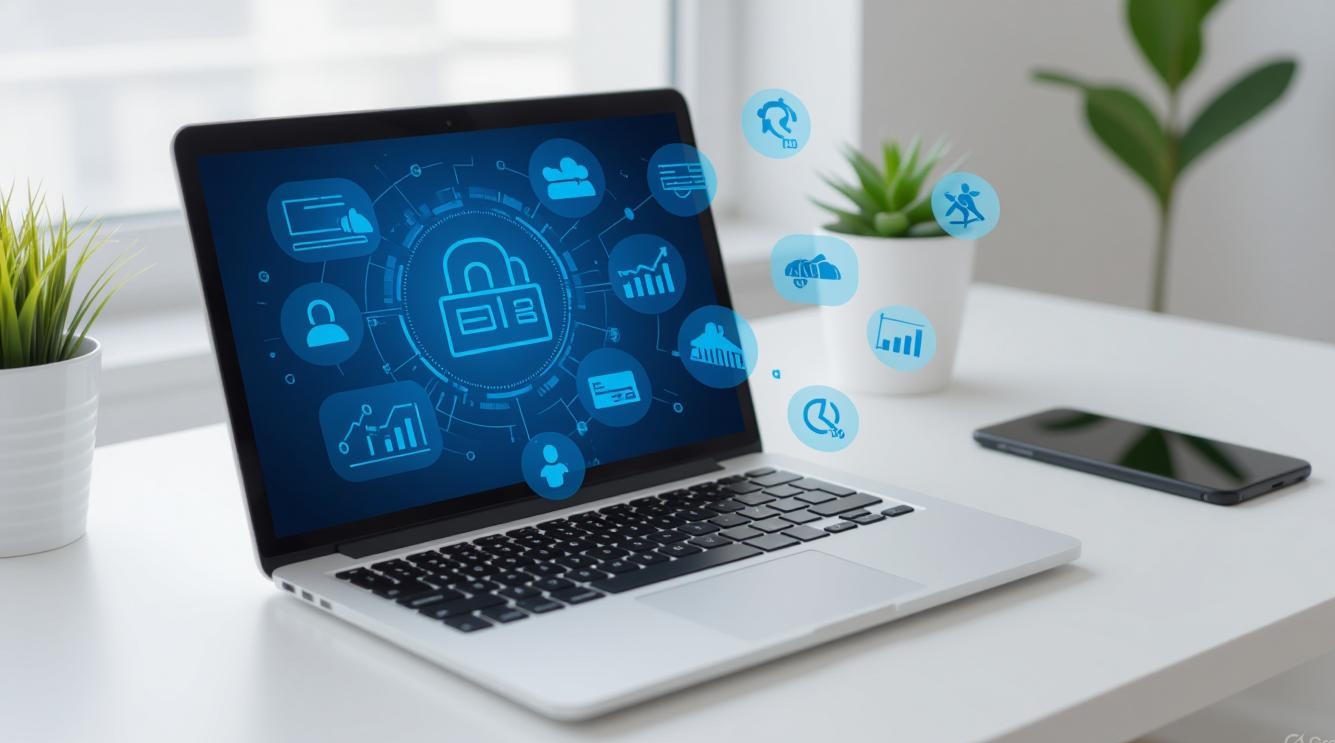10 Essential Tips to Keep Your Laptop Running Smoothly in 2025
In 2025, laptops are more powerful than ever, powered by AI-driven processors, advanced cooling systems, and seamless integration with cloud services. However, even the latest models from brands like Apple, Dell, and Lenovo can slow down without proper care. Whether you’re a remote worker, gamer, or student, maintaining your laptop’s performance is crucial for productivity and longevity. This guide shares 10 essential tips to keep your laptop running smoothly, incorporating the latest trends in laptop maintenance for 2025. Follow these steps to optimize speed, extend battery life, and prevent common issues like overheating or crashes.
1. Regularly Update Your Operating System and Software
Keeping your OS up to date is the foundation of smooth laptop performance. In 2025, updates from Windows 12, macOS, or Linux distributions often include AI-enhanced security patches, bug fixes, and performance optimizations.
- Why it matters: Outdated software can lead to vulnerabilities and inefficiencies.
- How to do it: Enable automatic updates in your settings. For Windows, go to Settings > Update & Security. On macOS, check System Settings > General > Software Update.
- Pro tip: Schedule updates during off-hours to avoid interruptions.
By staying current, you’ll benefit from features like improved energy efficiency, which can boost battery life by up to 20%.
2. Manage Storage Space Efficiently
Cluttered storage is a top culprit for sluggish laptops. With high-resolution media and AI-generated content filling drives faster than ever, aim to keep at least 20% of your storage free.
- Delete unnecessary files: Use built-in tools like Windows Storage Sense or macOS’s Optimize Storage to remove duplicates and large files.
- Leverage cloud storage: Services like Google Drive or OneDrive now offer AI-powered organization, freeing up local space.
- Upgrade if needed: Consider switching to SSDs if you’re still on HDDs—2025 models make this upgrade affordable and straightforward.
Regular cleanups prevent fragmentation and ensure quick file access, keeping your laptop responsive.
3. Install Reliable Antivirus and Security Software
Cyber threats evolve rapidly, and in 2025, AI-driven malware is a growing concern. A robust antivirus protects against viruses, ransomware, and phishing without draining resources.
- Recommended tools: Opt for lightweight options like Microsoft Defender (built-in for Windows) or Bitdefender, which use machine learning for real-time threat detection.
- Best practices: Run weekly scans and enable firewall protection. Avoid freeware from untrusted sources.
- Extra layer: Use VPNs for public Wi-Fi to safeguard data.
Strong security not only keeps your laptop safe but also prevents background processes from slowing it down.
4. Physically Clean Your Laptop
Dust and debris accumulate in vents and keyboards, causing overheating—a major issue for 2025’s compact, high-performance laptops.
- Cleaning routine: Every 3-6 months, use compressed air to blow out vents. Wipe the screen and keyboard with microfiber cloths and isopropyl alcohol.
- Avoid DIY risks: Don’t open the chassis unless you’re experienced; professional cleaning services are widely available.
- Cooling accessories: Invest in laptop stands or cooling pads with built-in fans for better airflow.
Proper physical maintenance can reduce temperatures by 10-15°C, preventing thermal throttling and extending hardware life.
5. Optimize Startup Programs and Background Processes
Too many apps launching at boot can bog down your system. In 2025, with AI assistants like Copilot integrated, managing these is key.
- How to check: On Windows, use Task Manager (Ctrl + Shift + Esc) > Startup tab to disable unnecessary items. For macOS, go to System Settings > Login Items.
- Streamline apps: Close unused tabs in browsers and limit background syncs in apps like email clients.
- AI optimization: New tools in Windows and macOS use AI to suggest which processes to kill for better performance.
This tip alone can shave seconds off boot times and free up RAM for smoother multitasking.
6. Monitor and Control Laptop Temperature
Overheating leads to reduced performance as CPUs throttle to cool down. With 2025 laptops featuring powerful chips like Intel’s Lunar Lake or AMD’s Ryzen AI, monitoring is essential.
- Tools to use: Software like Core Temp or HWMonitor tracks real-time temps. Set alerts for thresholds above 80°C.
- Prevention: Use your laptop on hard, flat surfaces—not laps or beds—to allow proper ventilation.
- Advanced cooling: Consider undervolting via BIOS settings if you’re tech-savvy, but consult guides to avoid warranty issues.
Keeping temps in check ensures consistent speed during intensive tasks like video editing or gaming.
7. Fine-Tune Power and Battery Settings
Battery health directly impacts performance. In 2025, adaptive charging tech in laptops like the MacBook Pro optimizes longevity.
- Customize plans: Switch to Balanced or Power Saver modes in Windows Settings > System > Power & Battery when not needing full power.
- Battery care: Avoid full discharges; keep charge between 20-80%. Enable battery health features in settings.
- Eco modes: New AI-driven modes adjust brightness and performance based on usage patterns.
These adjustments can extend battery life by 30% while maintaining smooth operation.
8. Update Drivers and Firmware Regularly
Outdated drivers cause compatibility issues and crashes. Manufacturers release updates frequently for 2025 hardware.
- Easy updates: Use tools like GeForce Experience for NVIDIA GPUs or Device Manager in Windows for general drivers.
- Firmware checks: Visit your laptop brand’s support site (e.g., Dell SupportAssist) for BIOS updates.
- Automation: Enable auto-updates where possible to stay current without manual effort.
Fresh drivers ensure hardware runs at peak efficiency, especially for graphics-intensive apps.
9. Backup Data and Perform Regular Defrags
Data loss from crashes is preventable, and in 2025, cloud backups are seamless with AI sorting features.
- Backup strategies: Use external drives or services like iCloud/OneDrive for automatic backups.
- Defragment SSDs?: No—modern SSDs don’t need it, but run disk checks via Command Prompt (chkdsk) or Disk Utility on macOS.
- Schedule it: Set weekly backups to avoid data overload slowing your system.
Regular backups keep your mind at ease and your laptop clutter-free.
10. Limit Multitasking and Use Performance Tools
Overloading your laptop with tabs and apps strains resources. 2025’s multitasking features are advanced, but moderation is key.
- Task management: Use built-in tools like Windows Task View or macOS Mission Control to organize workflows.
- Performance boosters: Apps like CleanMyMac or CCleaner remove junk files and optimize RAM.
- Hardware upgrades: If needed, add RAM—many 2025 laptops support easy upgrades for under $100.
By focusing on efficient use, you’ll maintain peak performance without hardware strain.
Implementing these 10 tips will keep your laptop running smoothly in 2025, adapting to emerging tech like AI integration and 5G connectivity. Start with one or two today, and you’ll notice improvements in speed, reliability, and lifespan. For personalized advice, check your manufacturer’s resources or consult a tech expert. Stay proactive—your laptop will thank you!






